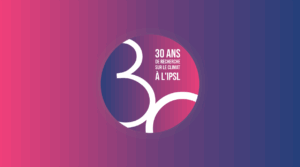Séminaire
Reexamination of the Southern Reexamination of the Southern Hemisphere baroclinic annular mode by separating sub-weekly and lower-frequency disturbances
Morio Nakayama (Atmosphere and Ocean Research Institute, The University of Tokyo, Chiba, Japan)
Séminaire du LMD à l’ENS.
Description
The baroclinic annular mode (BAM) is the leading mode of variability in extratropical tropospheric eddy activity, representing its hemispheric-scale pulsing. The BAM is associated with the distinct hemispheric-scale pulsing of eddy kinetic energy (EKE), poleward eddy heat flux and precipitation rate, indicating pulsing of moist baroclinic eddy activity. The BAM was originally identified based on “eddies” defined locally as the zonally asymmetric component of circulation. However, it has been known that the dynamical characteristics of high-frequency baroclinic disturbances differ substantially from those of lower-frequency quasi-stationary disturbances, both of which are involved in “eddies” without any separation. The present study utilizes temporal filtering to separate disturbances in different frequency ranges and thereby reexamine the structure and time evolution of the BAM variability. It is shown that the leading variability of EKE associated with high-frequency (sub-weekly) disturbances (BAM(H)) represent high-frequency disturbances near the eddy-driven polar-front jet regardless of the seasons and can capture fundamental characteristics of the conventional BAM, including its quasi-periodicity in austral summer, covariations with anomalous lower-tropospheric meridional temperature gradient and hemispheric-scale pulsing in poleward and upward eddy heat flux and precipitation rate. In contrast, these characteristics are less distinct in the leading variability of EKE associated with low-frequency quasi-stationary disturbances (BAM(L)). These suggest that the dynamics of high-frequency baroclinic disturbances is essentially important in the BAM activity, which can be well depicted by the BAM(H). Then, detailed dynamics is investigated from the viewpoint of the BAM(H).
Informations supplémentaires
Lieu
École normale supérieure – PSL
24 rue Lhomond – aile Erasme
salle Claude Froidevaux – E314





